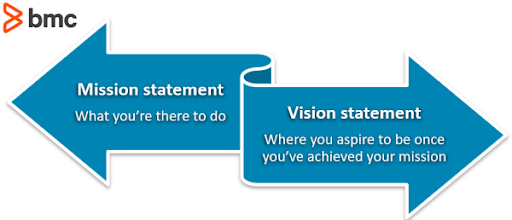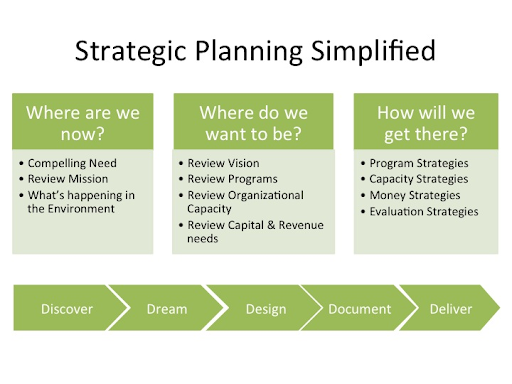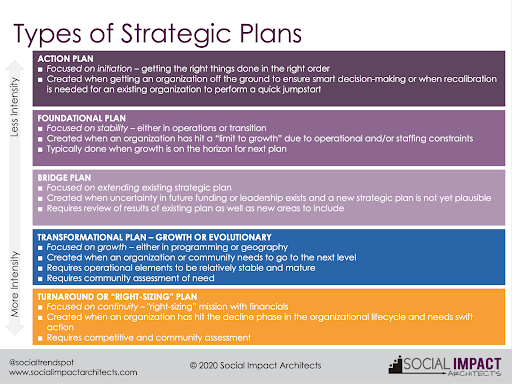
Governance Training for Young Leaders
Strategic Planning
Objectives
-
- The participant will be able to identify different types of strategic planning models.
- Be able to identify essential focal points needed for a strategic plan.
- Be able to create long and short term goals needed for a strategic plan
- Key communication between the board of directors
Introduction
For this part of your training, we will introduce you to strategic planning. You may or may not have encountered strategic planning before, nonetheless in this module we will explain what a strategic plan is, why one is needed, what types of strategic plans there are, and what goes into a strategic plan.
A strategic plan is a detailed proposal that is created in order to make an organization’s goals/mission achievable. Strategic plans are very important to organizations because they keep the organization accountable in a way that keeps them on task to reaching the big picture for the organization. Now strategic plans are not set in stone and are modified repeatedly in order to adapt to change. Something to consider is that there are many types of strategic plans that can be used in various types of ways meaning that there is not one set plan for everything.
What is Strategic Planning?
The strategic planning process relates strategies that will allow the organization to thrust its mission forward. As staff and board members begin to participate in part of the process, they obligate themselves to measurable goals, approve priorities for implementation, as well as committing to re-evaluating the organization’s strategies on an ongoing basis as the internal and external environments change. Usually what many nonprofits do to begin is use a process called “SWOT” which looks at strengths, weaknesses, opportunities, and threats. Something to also keep in mind is that one must look at the internal and external factors such as the organization’s ability to reach certain goals for this may dictate changes in order to be able to reach these goals that will be an over all part of the bigger picture.
Overview of a strategic plan
When it comes to creating a strategic plan for nonprofits, it takes a lot of time and effort because there are things that must be taken into consideration before having a plan be approved by the members of the board. It is because of this that many of the times organizations will hire planning consultants to assist with this.
Necessary Fundamentals when designing a strategic plan.
Top Four Essential Focal Points Needed to Create a Strategic Plan Include
- Recognizing your organization’s Values
- Understanding your Mission Statement
- Creating a Vision Statement
- Assessing Current Projects
Values
- What does your organization value?
- What is important to your organization?
Assessing Current Projects
- Allows participants, volunteers, and staffing to identify what position the organization is in.
- Allows board members to evaluate what projects/ strategies have been successful and which have not.
- While also allowing board members to discuss how finances are being met and dispersed throughout the organization.
Mission Statement Vs. Vision Statement
- A mission statement is an overall formal statement that expresses an organization’s common goal.
- While a vision statement would be where you foresee the organization. (Usually a set objective within a specific time frame.

Benefits of Good Implementation:
Leadership: The purpose and contribution of an organization are defined in a mission statement. In a vision statement, leaders describe where the company is headed, while in a mission statement, they clarify why it exists. Disney’s mission for example is simple, “To make people happy.” A competent leader knows how to distinguish between vision and mission and ensures that the organization does, too.
Another aspect of a good implementation in strategic planning is Communication. A question to consider while delivering an important plan to your organization is; How are you going to share this strategic plan with your organization ? Having an understanding of how people assimilate information is essential. The use of Videos, pictures and audio can be beneficial to people who are more visual learners or otherwise.
It is vital that all the team members are on the same page if you want to increase the efficiency of your workforce. Communication strategies make sure relevant information is conveyed to the right people, both internally and externally. In order to achieve success in the workplace, key information should be evenly distributed throughout the organization with no specifics left out. Without complete information, employees might not be able to complete their tasks.
Resources : The true cost of implementation is often underestimated or not identified when sufficient funds and time are available. An example of a true cost is when staff commits to achieving a goal within a realistic period of time, identifies expenses associated with a tactic, or is surprised by vendor cost overruns.
Do’s & Don’ts
When it comes to strategic planning there are many important things that you have to consider. Some of the important things to consider are what things you should and should not be doing when it comes to strategic planning. If you know where to focus your efforts and can save you a lot of time for your organization.
The first thing you should be doing is creating an environment where everyone who is involved has a voice in the decision making process. This means not only treating the board of directors as the only guiding force when making decisions. Everyone should be involved and instead of making the board of directors the main influence, instead listen to their advice and create a new and improved plan using not only their knowledge and experience, but yours as well. This will result in creating the most optimal plan for everyone.
The second thing that you should focus on when making a strategic plan is letting your voice be heard isn’t the only important thing to do when it comes to strategic planning. Communication is nothing without LISTENING. Listening to each other’s ideas and opinions when creating strategies is also very important. This can include listening to the concerns of not only your team/staff, but also funders, constituents, clients, current and potential partners,etc. All these people can hold key information to optimize your strategic planning.
Lastly, creating benchmarks and goals for your strategic planning is also of utmost importance so you can monitor the progress of the staff. Defining success for each strategy and what that means is also important. The things you should try to avoid is disregarding your budget. You can’t create a strategic plan filled with strategies for a company that doesn’t have the funds to make it happen, it’s pointless. You need to make strategies that correspond with your company’s budget and create a breakdown of where those funds will be coming from. Don’t create a generic plan for your company without a thought, goal or mission for it. Don’t create a plan just because yours expired. For your strategic plan to be great it needs a purpose for the year. So you need to ask yourself those hard insightful questions about what the goals of your company are for the year and create your plan around that. These things are very important and should help you focus your efforts when it comes to putting together a strategic plan.
Conclusion
The overall aspect of strategic planning is to ensure that goals are being both made and achieved. By making sure that you have the right team on board with the same aspiration as what you want your program goals to attain. It is important to remember that there are different types of strategic plans. Additionally knowing how significant organizing your main objectives are such as: knowing the organizations’ values, mission statement, and vision statement will help facilitate your planning. While also accessing the current status of the organization. Reevaluating if your goals are being met while also having top priorities will help in assisting your organization. Additionally, thinking about the do’s and don’t to ensure that not only the steps to creating a strategic plan are being followed but the environment for the staff, volunteers, and board members is pleasant and open to suggestions.
Main goals
- What are they?
- Why is it important?
The importance of goals
- Providing a roadmap
- Ensuring responsibilities are met
Being Resourceful
- What to consider when creating a plan
Do and Don’ts
- Team work Environment
- communication
- Budgeting
- Overall view on the plan
Quiz
![]()


